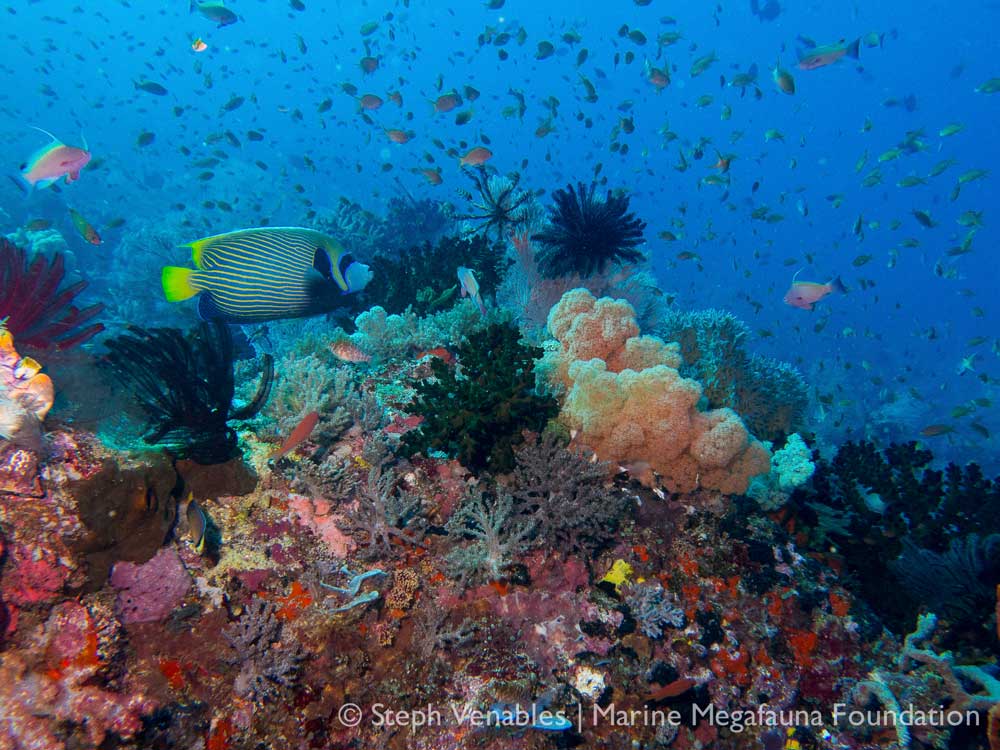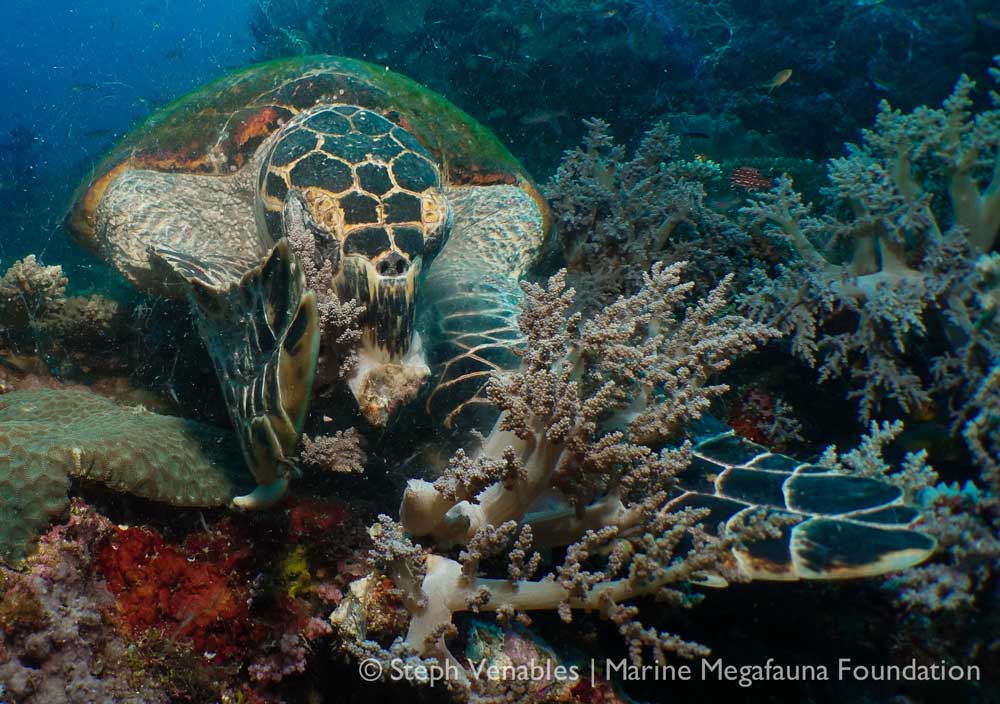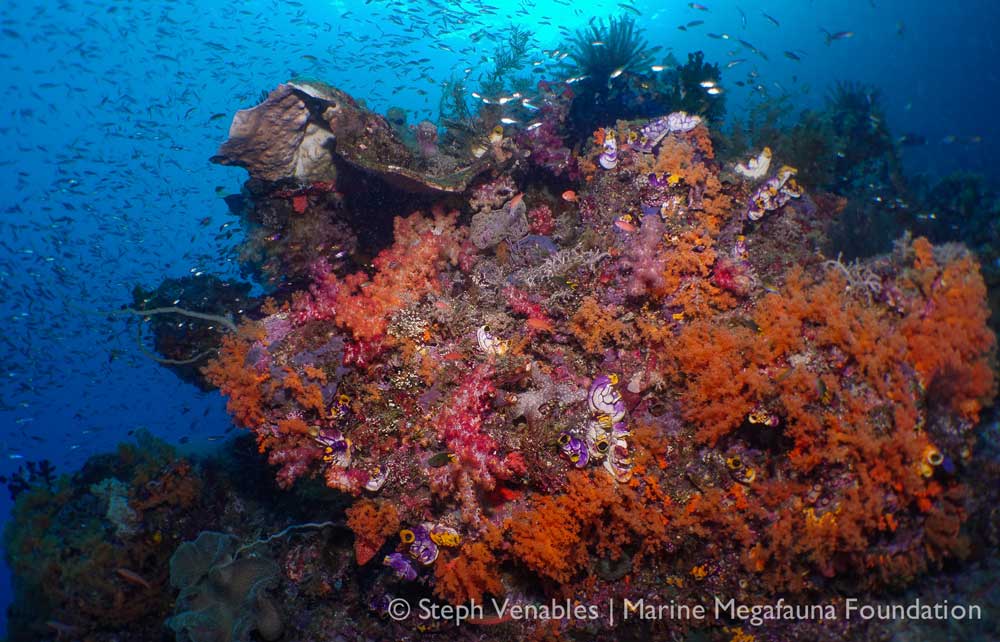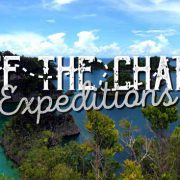Science Doesn’t Take Holidays
When someone mentions a live-aboard dive trip with a group of like-minded and passionate divers to one of the most biodiverse marine hotspots on the planet, some would think that it couldn’t get much better. Well, it turns out that it can…
Not only were Off the Chart Team Raja on a dive trip of a lifetime, they were also on a mission – a manta mission and I was lucky enough to be joining them to share some information about Raja Ampat’s manta rays and introduce them to the wonderful world of citizen science.

Topside view of Misool
The Raja Ampat Archipelago of West Papua is made up of approximately 1500 islands and sits smack bang in the middle of the Coral Triangle, an area widely known for having the world’s highest biodiversity of marine life. The surrounding waters contain 80% of the world’s coral species, more than 1400 species of fish and 16 species of marine mammal. It is also one of the few locations in the world where both species of manta ray can be reliably encountered. Needless to say, it is a pretty special place!
In partnership with scientists from the University of Papua (UNIPA) and Raja Ampat SEA Centre, the Marine Megafauna Foundation has been conducting research into these fascinating animals in order to guide effective management and protection of these threatened species. One of the major focuses of our work is a long-term photo identification catalogue – each manta ray has a unique spot pattern on their underside which can be used to identify individuals and track them over time, just like a human fingerprint. Photo-ID can provide a range of vital information about manta populations and be used to monitor them over time. These long term studies can tell scientists how many mantas are in a population, where the critical habitats are located, give insight into demographics, movement patterns and reproductive ecology. It’s amazing how much information can be collected with a single happy snap! With the help of citizen science, we have identified almost 700 reef manta rays (Mobula alfredi) and over 250 giant manta rays (Mobula birostris) at cleaning stations and feeding sites in Raja Ampat, and these numbers continue to increase.

Example of a manta’s spot pattern
The project is based at Papua Explorers Dive Resort in the Dampier Strait region in central Raja Ampat. This expedition provided the opportunity for us to pay a visit to manta hotspots in the southern region of the archipelago, Misool.
It also gave the group a chance to become citizen scientists, contribute to manta research and learn more about these incredible creatures through lectures on breaks between dives.
The team encountered a total of 9 reef manta rays and 6 of these individuals were new additions to our catalogue. The most exciting discovery occurred on our first dive at Magic Mountain when we encountered and identified a black morph (melanistic) female reef manta ray.
This stunning lady who goes by the name of ‘Salad Fingers’ (or less affectionately, INRA0062A) had been previously photographed in 2015 at Manta Sandy in the Dampier Strait. This was only the second record in our catalogue of a reef manta to be sighted in both Central and South Raja Ampat, travelling approximately 200km between sites. Not only are discoveries like this incredibly exciting, but they give us a better insight into movement patterns, seasonality and habitat use of mantas in the archipelago.

Salad fingers
Once the team returned to dry land we uploaded all the manta encounters to MantaMatcher.org – the Wildbook for manta rays. MantaMatcher is the world’s first automated, global manta ray photo-ID catalogue. It is a revolutionary tool that allows any diver or snorkeler to upload manta ray ID photos (belly shots). These photos are then matched against the existing regional database using a specially designed, automated matching algorithm.
Check it out here and if you have any photos of manta bellies, even if they are from years ago, please upload them and contribute to manta research and conservation. Citizen science broadens the reach of data collection, as researchers can’t be everywhere at once! Aside from the science the team were treated to a smorgasbord of marine life – feeding mobula rays, friendly coral-munching turtles, schooling trevally, sea fans as far as the eye can see, and more pygmy seahorses than you can poke a stick at… literally!

Steph’s Raja Dream Team
The first ever Off The Charts Expedition in Indonesia was an all-round success! Want to get involved? Keep your eyes peeled for upcoming trips, come and join us to keep blowing the socks off science, who knows what discoveries will follow? – by Steph Venables
Links
UNIPA – www.unipa.ac.id
Marine Megafauna Foundation – www.marinemegafauna.org
Raja Ampat SEA Centre – www.seacentre.org
Papua Explorers – www.papuaexplorers.com
MantaMatcher – www.mantamatcher.org
















